Tubes come in all shapes and sizes and are extensively customizable. The key to starting any new project is to ensure you speak the same language. If you can communicate clearly between your creative team, marketing team, purchasing team, account executive, and customer service rep within the same terms, you're halfway to a successful venture.
Know The Lingo
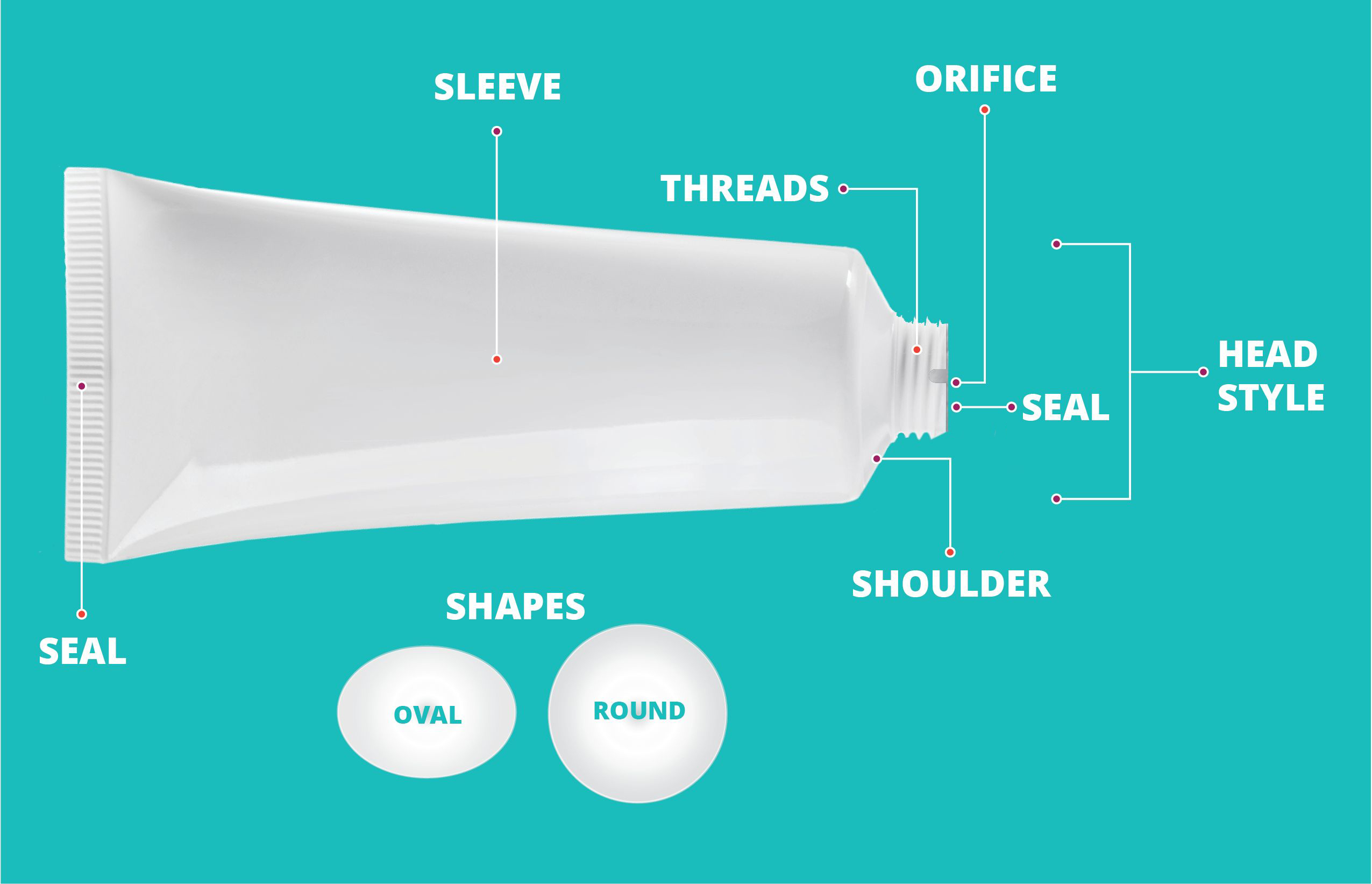
The head of the tube consists of the shoulder, threads, and orifice. In the case of laminate and extruded tubes, the head is typically molded separately so that it can be joined with the tube sleeve later. In the case of aluminum tubes, the head and sleeve are molded together; more on that later.
The seal is where the walls of the tube are joined after the tube has been filled, typically via Hot Air Seal. During the Hot Air Sealing process, hot air is blown into the open cavity of the tube so the walls become soft and pliable. Tube sealing jaws then crimp the top of the tube, welding it together. Hot air sealing is a good choice for larger production runs due to it's fast cycle time.
Tubes can also be sealed ultrasonically through high-frequency vibration that generates intense heat, causing the walls of the tube to soften so they can be welded together. The processing time is longer for ultrasonic sealing, and it’s not recommended for large runs.
The tube sleeve can be made in many different ways depending on the tube type.
Types Of Tubes
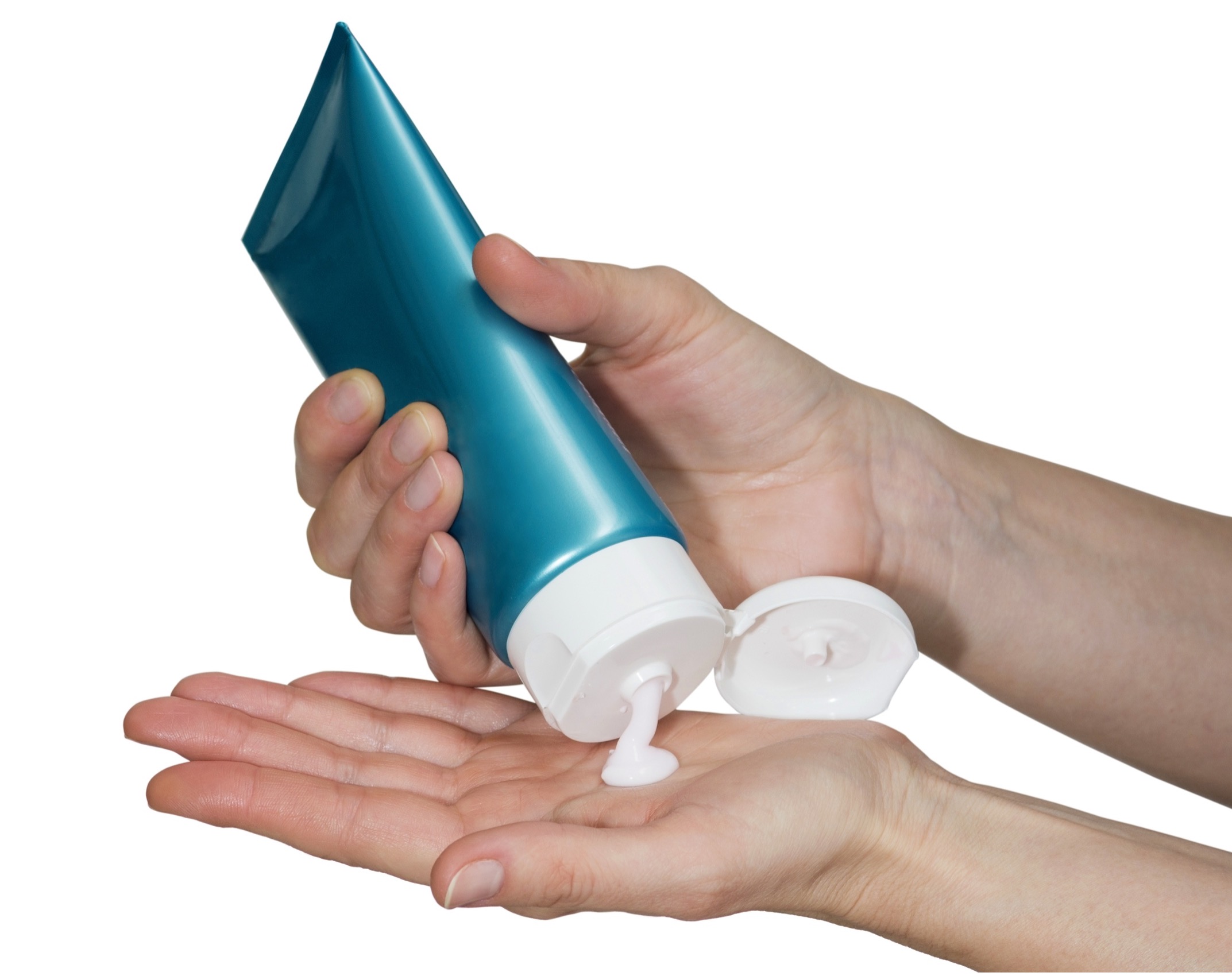
Extruded Tubes – Extruded Tubes are seamless. Plastic resin is extruded into a tube form and then cut to size before being "headed” or joined with the separately molded shoulders and head.
- Monolayer Extruded Tubes – Typically made of extruded polyethylene, monolayer tubes are ideal when a barrier layer is unnecessary, i.e., for most personal care products, and are more recyclable.
- Co-extruded Tubes – Typically polyethylene with an added EVOH barrier layer when needed for specific formulations, including solvents, oils, gases, and SPF. Co-extruded tubes can have many layers.
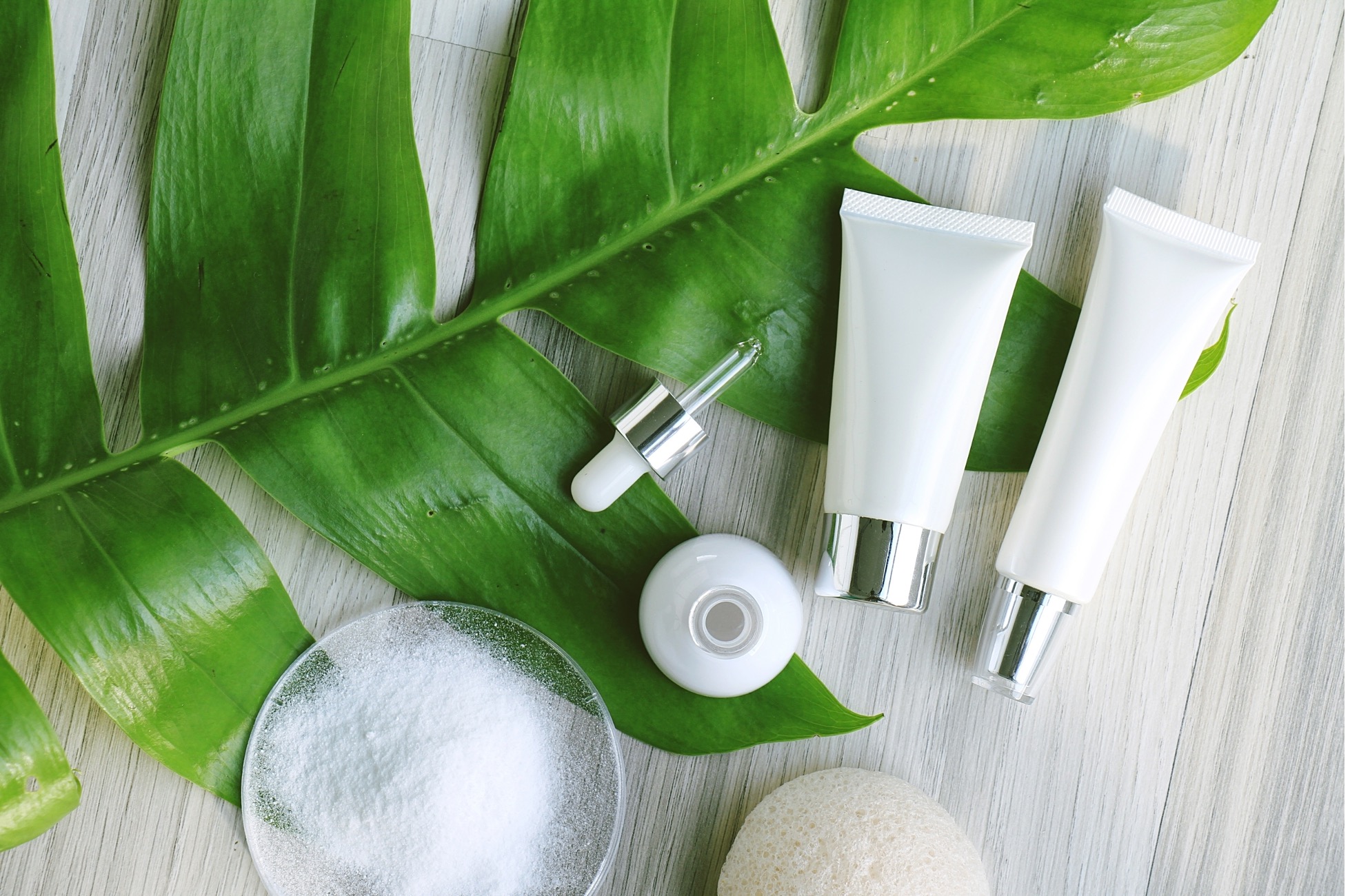
Laminate Tubes - Laminate tubes are composed of several layers of film that are adhered to each other with an adhesive or "Tie Layer". Once the layers are laminated, they are rolled into a tube shape and cut to size before being "headed” or joined with the separately molded head and shoulders. Laminates can be printed before or after being formed into a tube shape.
- Plastic laminate tubes– These are composed of layers of plastic film, typically an inner layer compatible with the fill, middle barrier layer, and exterior printable layer.
- Foil Laminate Tubes- This creates the look of an aluminum tube with equal barrier properties to aluminum but with the hand feel and easy usability of plastic.
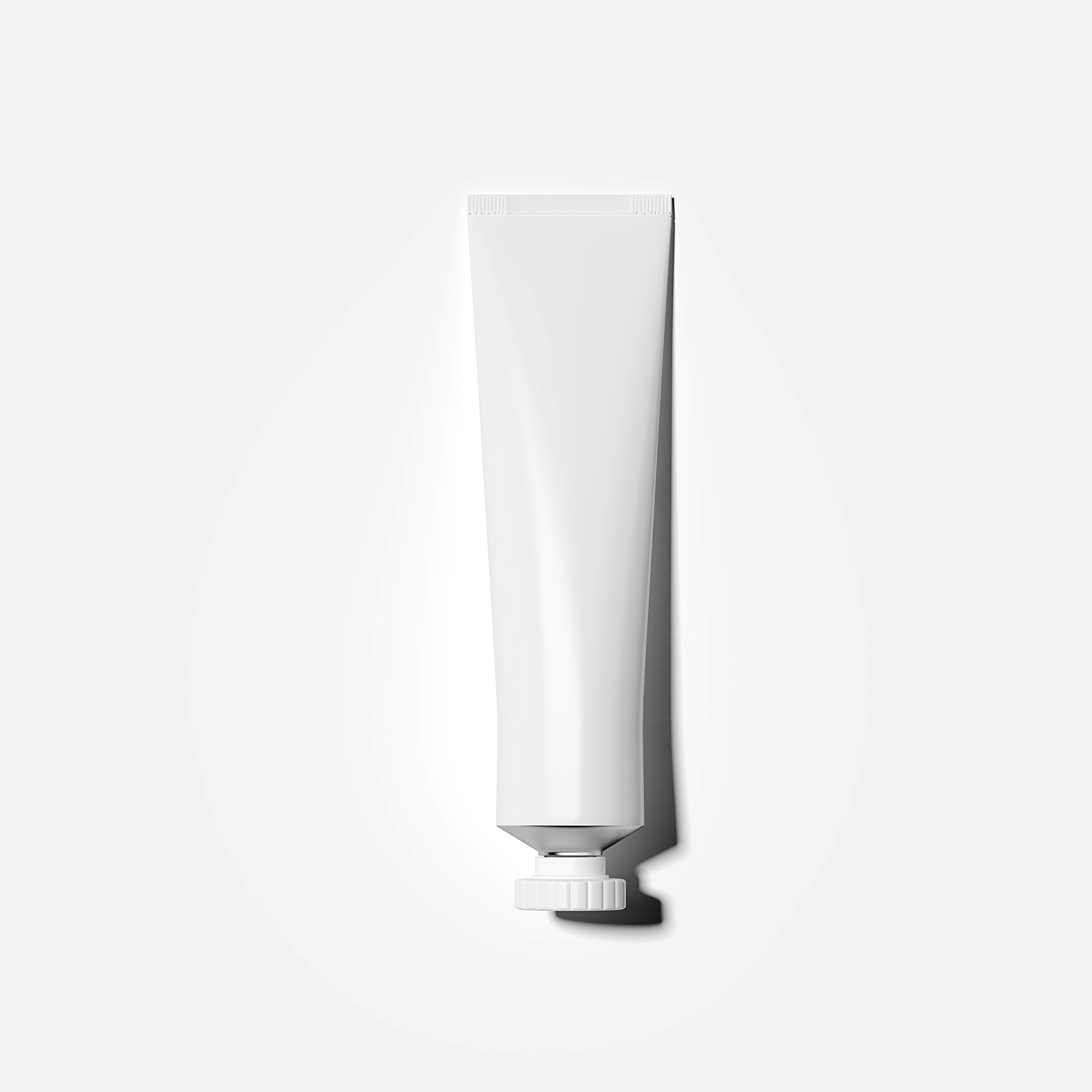
Aluminum Tubes – Aluminum tubes are “Impact Extruded” or punched into shape Aluminum Tubes – Aluminum tubes are "Impact Extruded" or punched into shape by a mold from a small aluminum disc. Unlike laminate and extruded tubes, the aluminum tube's shoulders, neck, and orifice are molded along with the tube in one continuous piece. Aluminum tubes are 100% recyclable. Internal liners can be applied to adjust for product compatibility. Aluminum tubes can be molded with a thin layer sealing the orifice which can later be punched through with the cap by the consumer.
Get On Spec: What you should think about when purchasing a tube.
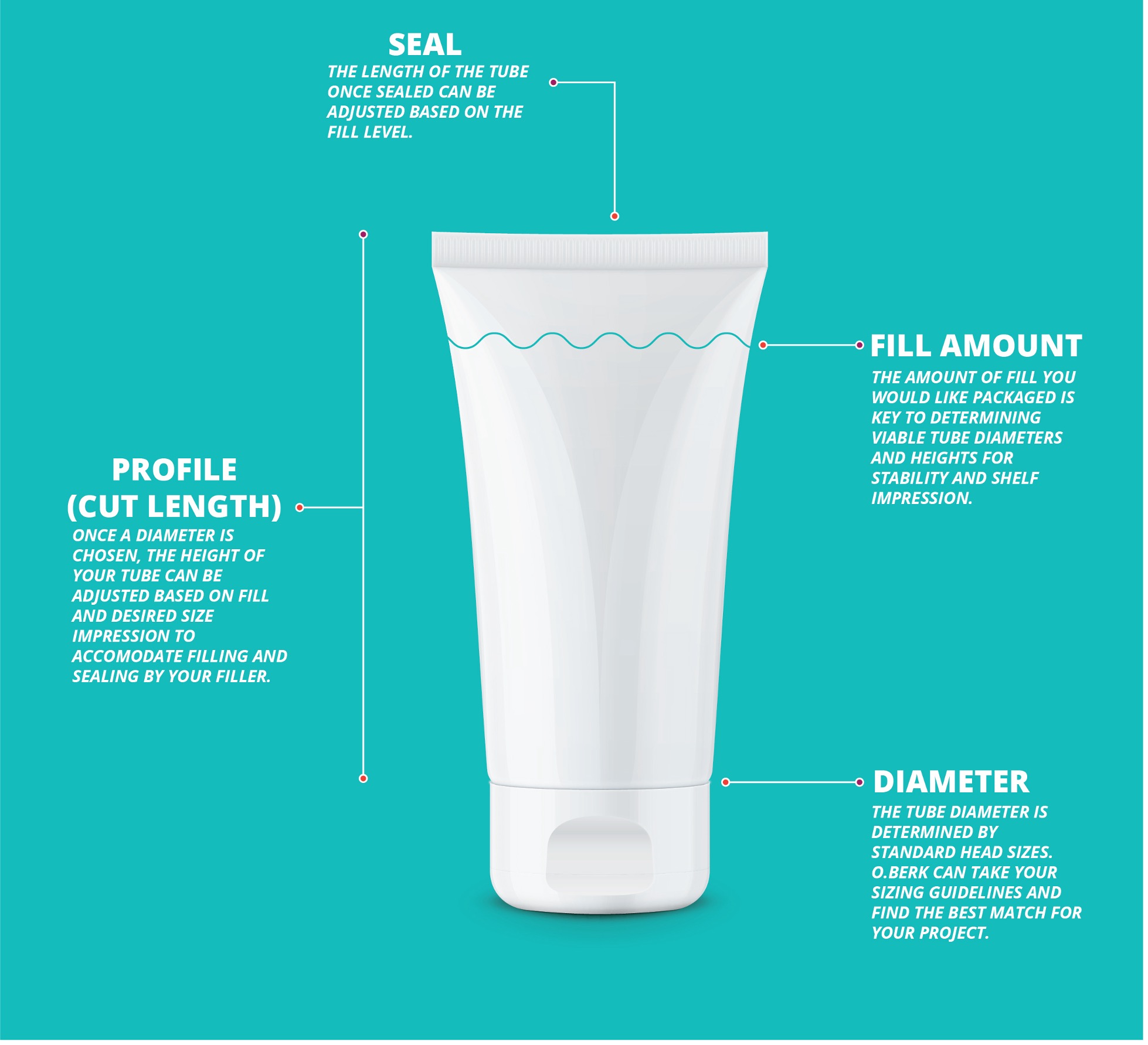
When you're looking to spec a tube, the best place to start is with your fill amount and whether you're looking for an oval or round tube. From there, you can use this chart to estimate the range of diameters and heights that will accommodate your fill while remaining balanced.
Once you've estimated the shape and size of the tube you're looking for, our team can work with you to choose the proper closure to help dispense your product and work with you on options for decoration.
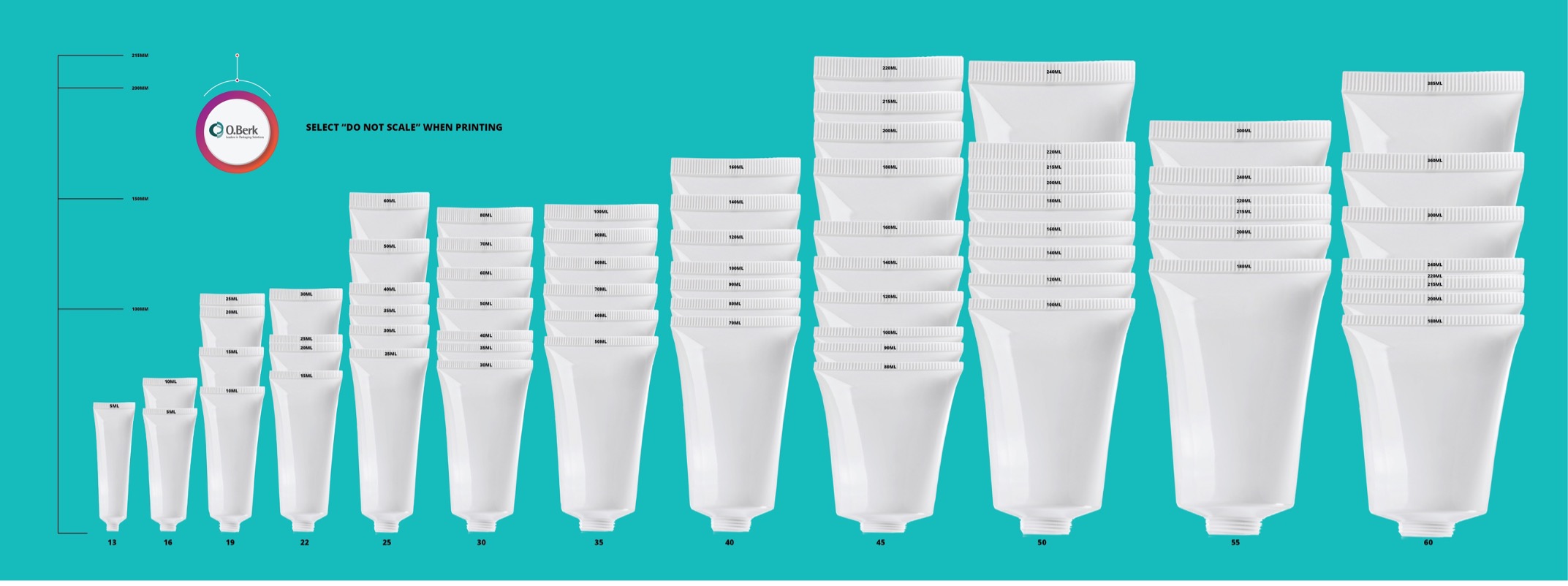
Additionally, make sure to explore our other resources, How to Choose the Ideal Tube for Your Product and How Can I Decorate My Tube? for more insights into tube selection and decoration.







































